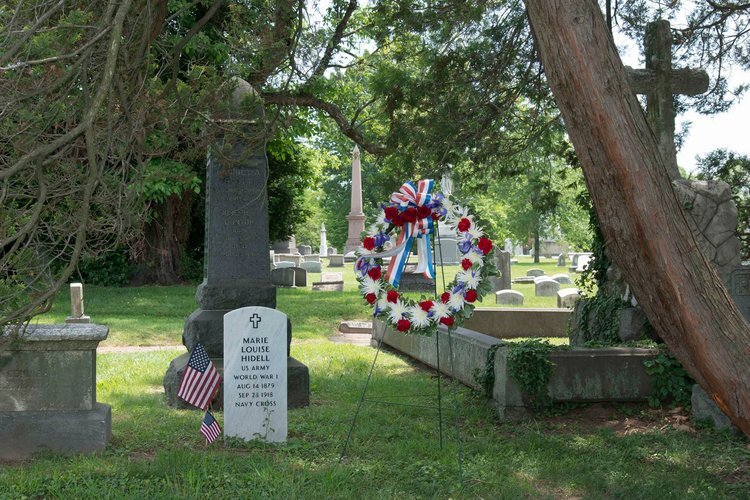Once known as “Decoration Day”, Memorial Day is a time for remembering the people who died while serving in America's armed forces.
A History of “Decoration Day”, from the US Department of Veterans Affairs:
Three years after the Civil War ended, on May 5, 1868, the head of an organization of Union veterans — the Grand Army of the Republic (GAR) — established Decoration Day as a time for the nation to decorate the graves of the war dead with flowers. Maj. Gen. John A. Logan declared that Decoration Day should be observed on May 30. It is believed that date was chosen because flowers would be in bloom all over the country.
The first large observance was held that year at Arlington National Cemetery, across the Potomac River from Washington, D.C.
The ceremonies centered around the mourning-draped veranda of the Arlington mansion, once the home of Gen. Robert E. Lee. Various Washington officials, including Gen. and Mrs. Ulysses S. Grant, presided over the ceremonies. After speeches, children from the Soldiers’ and Sailors’ Orphan Home and members of the GAR made their way through the cemetery, strewing flowers on both Union and Confederate graves, reciting prayers and singing hymns.
Marie Louise Hiddell Tour
In September 1918, Philadelphia was struck by the influenza pandemic known as the "Spanish flu". At the front lines of the outbreak was Navy Nurse Marie Louise Hidell, who treated afflicted soldiers and sailors at the U.S. Naval Hospital in Philadelphia. She was the focus of our first Digital Tour, and we thought this would be the perfect weekend to visit her again.
Notable Veterans on the Blog
Discover other Notable Veterans at The Woodlands like Emily Bliss Souder, and Sylvester Bonnaffon, who first entered the army in 1861 in the 99th Pennsylvania Volunteer Infantry.
Visit Other Notables at The Woodlands
We also recommend visiting the NOTABLES page of our website. There you’ll find about 100 notable burials at The Woodlands (this is by no means an exhaustive list) . Included there is our #1 Veteran, who also happens to be the very first burial at The Woodlands in 1845:
Commodore David Porter (1780-1843), Section CC Lot #222
On April 10, 1845 David Porter was the first person buried at Woodlands Cemetery. He was purposely reinterred from a plot at the Naval Home for retired officers on the east bank of the Schuylkill River in order to promote the Woodlands Cemetery as open for business. (Famous individuals buried in a cemetery always attracted new families.)
Porter was a naval officer who fought pirates, and his grave in Center Circle with a tall marker topped by a large eagle still remains prominent. He began his career on the seas aboard his father's ship at age 16. Two years later he became a midshipman on the frigate USS Constellation. He was captured at Tripoli in 1803 during the Barbary Wars and was held as a prisoner-of-war for two years. After his release in 1805, Porter was assigned to New Orleans to suppress pirate activity. He captured three ships from Jean Laffite, a well-known pirate in the Gulf of Mexico. During this time he also adopted eight-year old David Farragut, who traveled with him to learn the life of a seaman. Farragut went on to become the first admiral of the U.S. Navy. During the War of 1812, Porter commanded the USS Essex in attacks on British shipping lines in South America. His trip with the Essex around Cape Horn at the start of the war was notable as the first appearance of an American warship and flag in the Pacific Ocean. In 1823 he returned to the Caribbean fighting against piracy. When the commander of the USS Beagle was arrested by the Puerto Rican government for piracy, Porter and his naval force invaded Puerto Rico. The commander was released, but the U.S. Navy court-martialed Porter for pursuing unsanctioned excessive naval action. An appeal brought him a six-month suspension, but in response, Porter resigned and took a post as commander of the Mexican Navy. In 1829, President Andrew Jackson requested his return to the United States and appointed him minister to Turkey, a position he held until his death.



